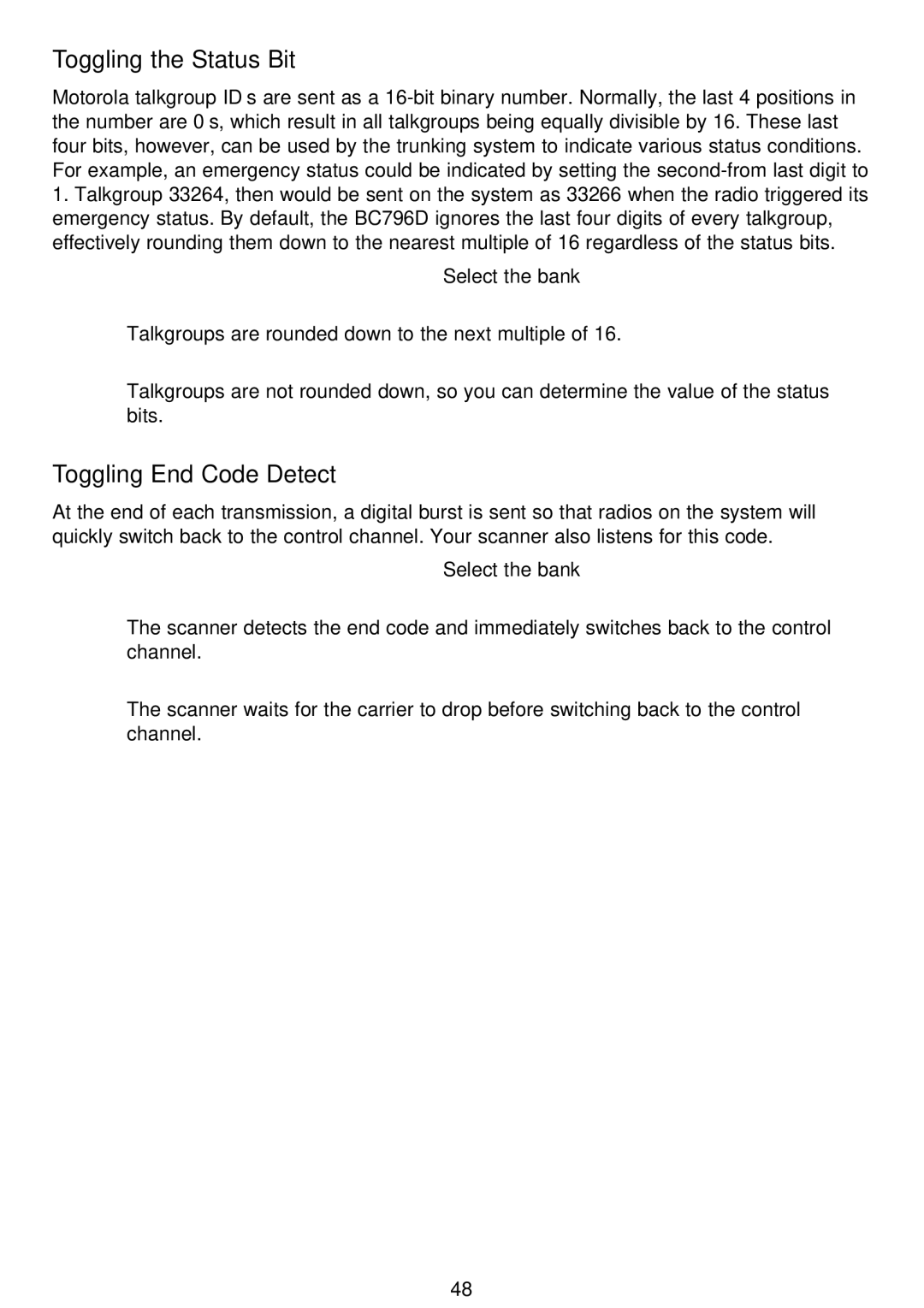Toggling the Status Bit
Motorola talkgroup ID’s are sent as a
1.Talkgroup 33264, then would be sent on the system as 33266 when the radio triggered its emergency status. By default, the BC796D ignores the last four digits of every talkgroup, effectively rounding them down to the nearest multiple of 16 regardless of the status bits.
2:SCAN OPTION → 2:TRUNK → Select the bank → 0:STATUS BIT
1:ON
Talkgroups are rounded down to the next multiple of 16.
2:OFF
Talkgroups are not rounded down, so you can determine the value of the status bits.
Toggling End Code Detect
At the end of each transmission, a digital burst is sent so that radios on the system will quickly switch back to the control channel. Your scanner also listens for this code.
2:SCAN OPTION → 2:TRUNK → Select the bank → :END CODE
1:DETECT
The scanner detects the end code and immediately switches back to the control channel.
2:IGNORE
The scanner waits for the carrier to drop before switching back to the control channel.
48
